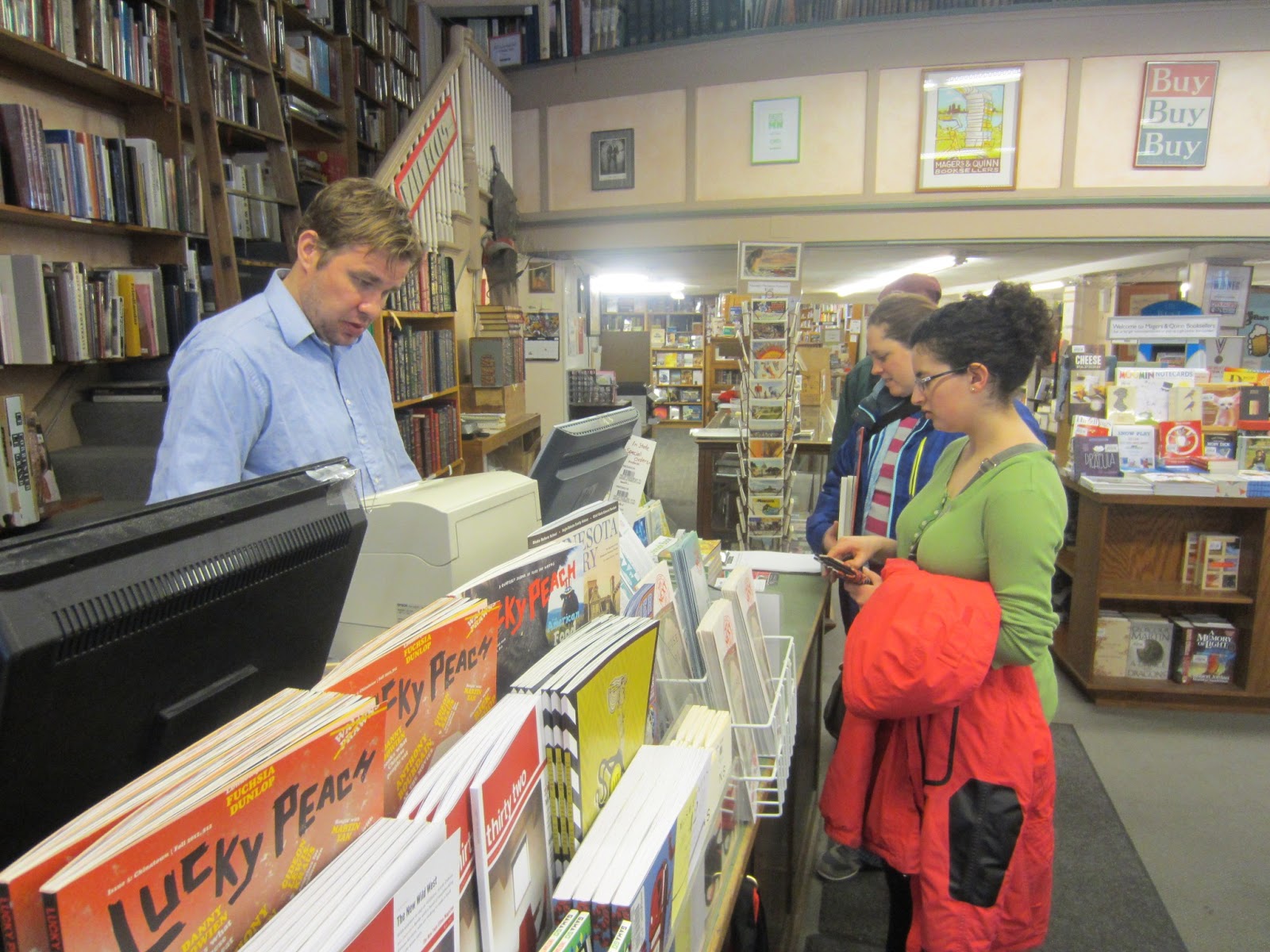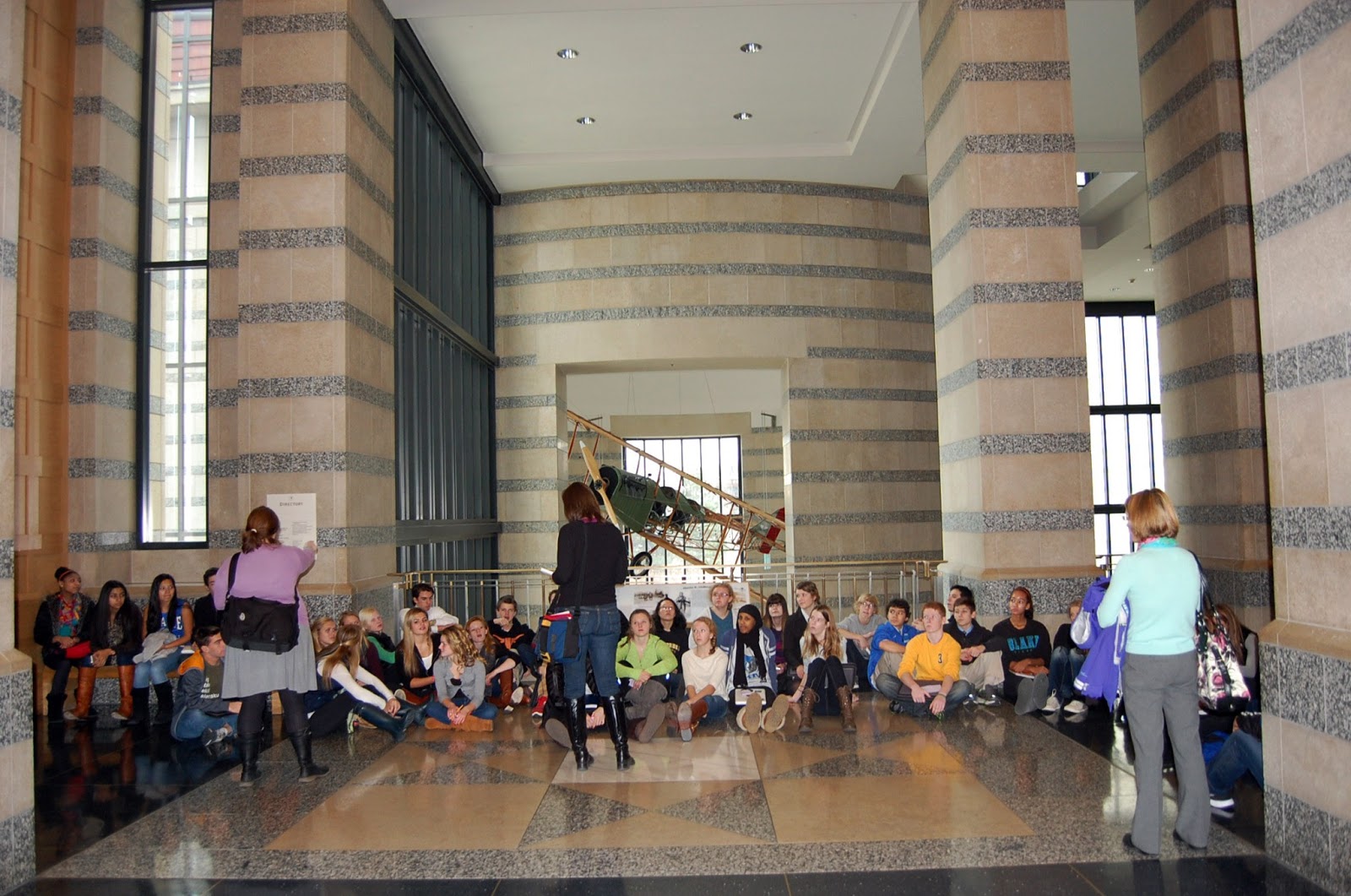This year, our Reading Club has morphed into the Library Club--their aims and goals are not different (they still want to talk talk talk about books), but the location where they hang out--the library tech center--is now much more central to their club identity. They decorated their space with artwork and they even made a blanket to keep cozy. It didn't last, because of the renovation, but they enjoyed having a space of their own and we enjoyed overhearing their conversations (their heated debate about the best hideouts during a zombie apocalypse was a highlight).
The Library Club was very active this year. They co-wrote a novel during November's National Novel Writing Month (it was a complex fantasy/sci fi tale told from multiple points of view, still in progress), created a "Blind Date with a Book" display for Valentine's Day (covering the titles of books with decorated paper), met with visiting author Jennifer Miller (Year of the Gadfly), and planned a Bookstore Crawl. The Bookstore Crawl was the highlight of our year. We visited three independent Uptown Minneapolis bookstores (Magers & Quinn, Booksmart, Once Upon a Crime), independent record store Treehouse Records, went out for lunch, and used public transportation to get around.
 |
| The Library Club browses the upstairs rare book section at Magers & Quinn. |
 |
| The Library Club (ok, sometimes they're still the Reading Club) signs a bookstore guest book with their signature philosophical cow cartoon. |
 |
| For a few of our students, taking the bus was their first time using public transportation in Minneapolis |
The kids had so much fun (and spent so much time at each bookstore--this turned into an all-day excursion) that we have every intention of making the Bookstore Crawl an annual or even biannual Library Club event.




























